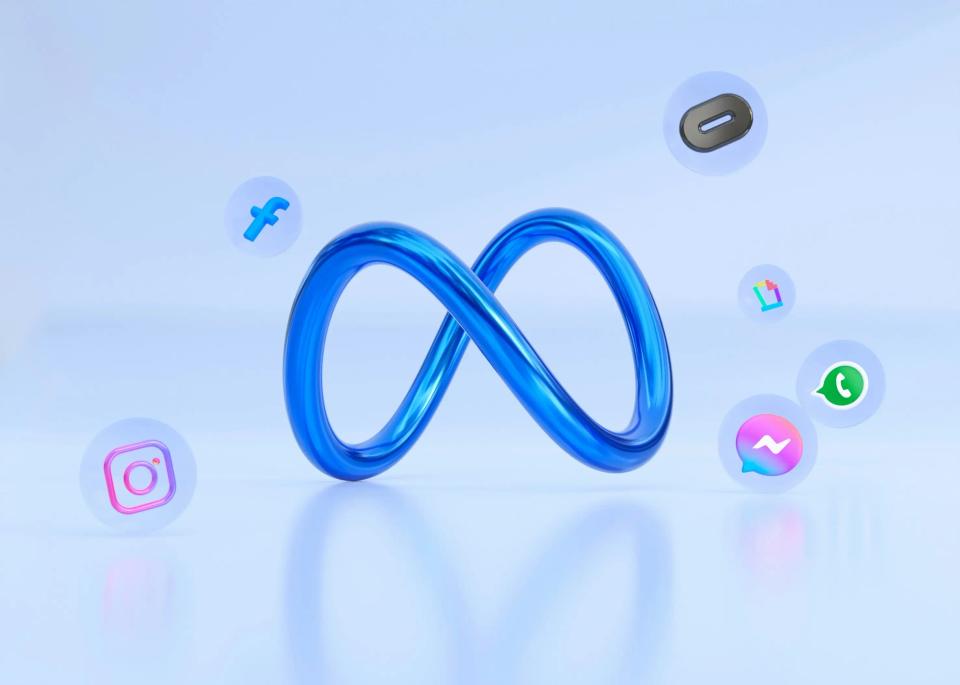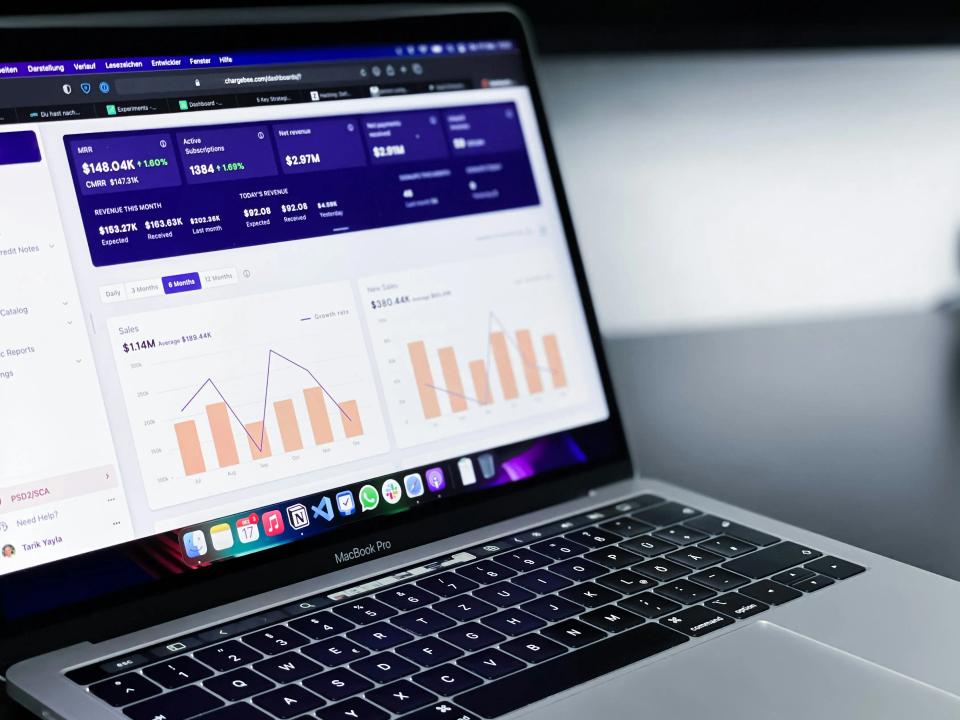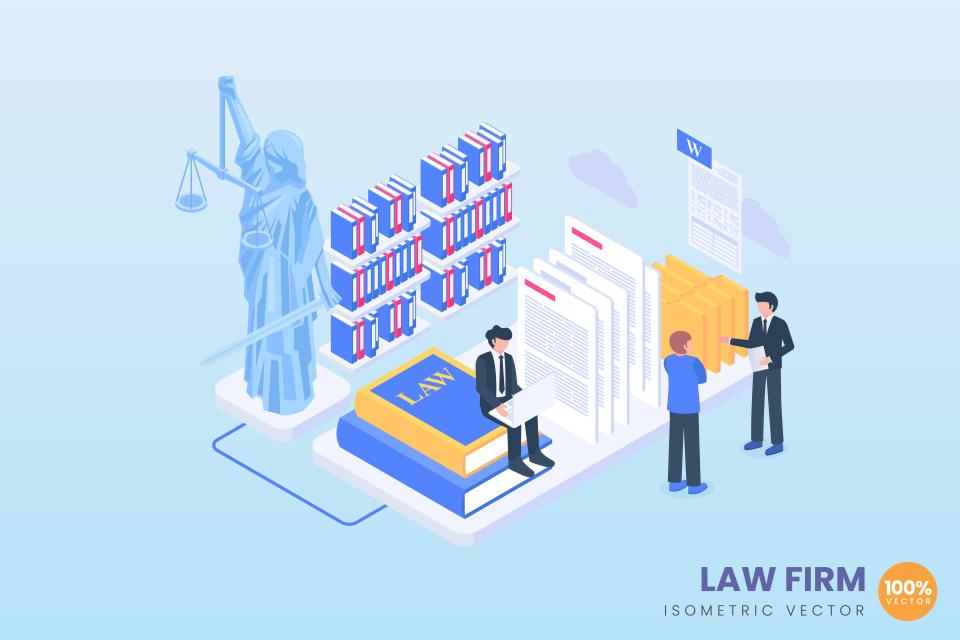Alright, let's dive in. You're an IT consulting firm owner, or maybe you're steering the marketing ship. You know the digital ocean is vast, and frankly, a bit terrifying. Your competitors are out there, sharks in the water, and you? You're trying to signal your expertise to businesses desperately needing your help, but sometimes it feels like you're just shouting into the wind.
Many IT firms like yours pour money into Google Ads, hoping for a flood of high-value clients, only to find a trickle of low-quality leads, or worse, a gaping hole in their budget with nothing to show for it. It's frustrating, isn't it? You see the potential, but the path to making Google Ads a true client-attraction engine feels shrouded in technical jargon and expensive trial-and-error. But what if I told you there's a clear, strategic way to cut through the noise and connect directly with decision-makers actively searching for your exact IT solutions?
This isn't about just "doing" Google Ads; it's about mastering them. This guide will illuminate the essential strategies to optimize your campaigns, transforming them from a cost center into a consistent, predictable source of qualified leads for your IT consulting firm. At CaptivateClick, we've navigated these waters for countless B2B service providers, including tech firms just like yours, helping them harness the undeniable power of targeted advertising to achieve real, measurable growth.
Optimizing Google Ads for IT Consulting Firms: Attract High-Value Clients
The digital battlefield for IT consultants is fierce. You're not just selling services; you're selling trust, expertise, and the promise of solving complex technological challenges. In this arena, standing out and reaching the right decision-makers—those actively seeking your specialized solutions—isn't just important; it's paramount to your survival and growth.
The Unseen Struggle and the Glimmering Opportunity
Imagine this: a CTO is frantically searching "emergency cybersecurity response team" after a breach. Or perhaps an IT Director needs an "expert cloud migration strategy for financial services" to stay competitive. These aren't casual browsers; they're businesses with urgent needs and budgets ready to deploy. The problem? Many IT consulting firms cast too wide a net with generic marketing, or their Google Ads campaigns are misconfigured, bleeding cash and yielding leads that go nowhere. It's a common tale of frustration, where potential clients slip through the cracks because your message isn't hitting the mark at the precise moment of their need.
But here lies the incredible opportunity. Google Ads, when wielded with precision and strategic insight, becomes your direct hotline to these high-intent prospects. It’s not just another advertising channel; it’s a powerful engine capable of attracting high-value clients who are already looking for the specific IT consulting services you offer. The key is strategic optimization.
This guide is your roadmap. We'll walk you through the essential strategies to fine-tune your Google Ads campaigns, transforming them from a frustrating expense into a reliable, high-performing lead generation machine for your IT consulting firm. At CaptivateClick, we've seen firsthand how B2B service providers, especially in the tech sector, can unlock significant growth by harnessing the power of targeted advertising.
Why Google Ads is a Non-Negotiable for IT Consulting Firms
Still on the fence about Google Ads? Think it's just for e-commerce or local plumbers? Think again. For IT consulting firms, Google Ads isn't a luxury; it's a fundamental tool for survival and dominance in today's digital-first world.
Pinpoint Precision: Reaching Clients with Urgent Needs
The magic of Google Ads lies in its ability to connect you with businesses at the exact moment they're searching for your specific IT solutions. Imagine someone typing "cybersecurity consulting for financial services" or "cloud migration experts for healthcare compliance." These aren't vague queries; they're cries for help from businesses with defined needs and the intent to hire. As Effiqs highlights, this high-intent targeting ensures your message reaches decision-makers actively seeking solutions, not just browsing. With over 3.5 billion searches on Google daily, you're tapping into a massive pool of potential clients.
Crystal Clear ROI: Know Your Numbers, Own Your Growth
Tired of marketing efforts where the return on investment is a fuzzy concept? Google Ads offers unparalleled measurability. You can track exactly how your ad spend translates into leads, consultations, and ultimately, clients, as Google's own resources explain. This transparency allows you to make data-driven decisions, optimize for what works, and confidently allocate your budget. For instance, a well-tracked campaign can show you that every $100 spent on "managed IT services" ads generates $500 in new contract value.
Agility and Authority: Control Your Destiny, Build Your Brand
The digital landscape changes fast, and Google Ads gives you the control and flexibility to adapt in real-time. You can adjust budgets, refine targeting, and tweak ad copy instantly to respond to market shifts or competitor actions. This agility ensures you're always positioned for maximum impact. Beyond lead generation, consistent visibility in search results for key IT terms helps build your brand authority, making you the go-to name when decision-makers in your target industries need expert IT guidance.
Laying the Foundation: Pre-Campaign Strategy for IT Consulting
Jumping into Google Ads without a solid plan is like setting sail without a map or compass – you’ll drift aimlessly and likely run aground. Before you spend a single dollar, you need to lay a robust foundation. This groundwork is crucial for ensuring your campaigns are laser-focused and primed for conversion.
Defining Your Ideal Client Profile (ICP) & Goals: Know Who You're Talking To
Who, exactly, are you trying to reach? Don't just say "businesses." Dig deeper. Are they CTOs in mid-sized manufacturing firms struggling with outdated infrastructure? Or IT Directors in healthcare needing HIPAA-compliant cloud solutions? As Adcore emphasizes, understanding psychographic factors like decision-making processes and compliance needs is key to crafting resonant messaging. Knowing their specific pain points allows you to tailor your ads to speak directly to their urgent needs.
Once you know who, define what you want them to do. Is your primary goal to get demo requests for your proprietary software? Consultation bookings for specialized IT strategy? Or perhaps downloads of your latest whitepaper on cybersecurity trends? Clearly defined campaign goals, as Amadeus Consulting advises for effective Google Ad strategies, will dictate your keywords, ad copy, and landing page design. Firms that clearly define their ICP often see a 50% increase in marketing effectiveness because their message is so much sharper.
Crafting High-Converting Landing Pages: The Crucial First Impression
Sending highly qualified traffic from your ads to your generic homepage is a cardinal sin in PPC. Why? Because it dilutes the message and forces the prospect to hunt for the information relevant to their specific search. You need dedicated landing pages for specific services or offers. If your ad promises "Expert Salesforce Consulting," the landing page must deliver exactly that, instantly.
Your landing page must scream value to IT decision-makers. It needs a clear, compelling value proposition, trust signals like client testimonials, relevant IT case studies, industry certifications, and partner logos. And, critically, a strong, unmissable Call-to-Action (CTA) that tells them precisely what to do next – "Request a Free Consultation," "Download Your Security Audit Checklist." Remember, these pages must be mobile-responsive and load lightning-fast; Unbounce notes that slow load times can decimate conversion rates, with even a 1-second delay potentially reducing conversions by 7%. At CaptivateClick, we understand that effective landing page optimization and intuitive web design are non-negotiable for turning clicks into clients.
Mastering Keyword Research for Niche IT Services
Keywords are the lifeblood of your Google Ads campaigns. Choosing the right ones is like having the right key to unlock a vault full of ideal clients. Get it wrong, and you're just rattling doorknobs, wasting time and money. For IT consulting, with its specialized services, precision in keyword research is paramount.
Understanding Search Intent for IT Solutions: Are They Buying or Browsing?
Not all searches are created equal. Someone typing "what is SOAR cybersecurity" has informational intent – they're learning. But someone searching "hire IT support services NYC" has transactional intent – they're looking to buy. Your primary focus for lead generation must be on transactional keywords and those indicating high commercial investigation. As Powered by Search outlines in their B2B SaaS Google Ads blueprint, aligning keywords with buying intent is crucial for attracting qualified leads.
Think about the journey your client takes. They might start with a problem ("slow network performance") then look for solutions ("how to improve network security") before finally searching for a provider ("best network security consultants"). Your keyword strategy needs to capture them at that critical decision-making stage. Transactional keywords often convert at rates 2-3 times higher than purely informational ones because the user is further down the sales funnel.
Types of Keywords to Target: Casting the Right Net
Your keyword arsenal should be diverse yet targeted. Include Service-Specific Keywords like "managed IT services," "Salesforce consulting," or "data analytics solutions." Don't forget Problem/Solution Keywords such as "how to prevent ransomware attacks" or "reduce IT downtime solutions." These capture prospects who know their pain but might not yet know the exact service name.
The real gold often lies in Long-Tail Keywords. These are longer, more specific phrases like "IT consulting for healthcare compliance in Texas" or "AWS migration services for e-commerce startups." While they have lower search volume, they are incredibly high-intent, face less competition, and often boast significantly higher conversion rates. Finally, consider Competitor Keywords (bidding on your competitors' brand names) with caution; it can be effective but requires careful management to ensure ROI.
Essential Negative Keywords for IT Consultants: Filtering Out the Noise
Just as important as knowing what keywords to target is knowing which ones to exclude. Negative keywords are your shield against irrelevant searches that drain your budget. For IT consultants, this is crucial. You'll want to add negatives like "jobs," "careers," "training," "courses," "free," "internship," and the names of software or technologies you don't support.
Imagine paying for clicks from job seekers looking for "IT consultant jobs" when you're trying to attract clients. Google’s own guide on negative keywords underscores their importance in refining targeting. Regularly reviewing your search terms report to identify and add new negative keywords can improve your campaign's cost-effectiveness by 15-20% by eliminating wasted ad spend.
Structuring Your Campaigns for Maximum Impact & Control
A well-structured Google Ads account is like a well-organized filing system – easy to navigate, manage, and optimize. For IT consulting firms offering diverse services, a logical campaign structure is not just good practice; it's essential for delivering relevant ads, controlling budgets effectively, and achieving a high Quality Score.
Campaign Structure by Service Line: Divide and Conquer
Think of your main service categories. Do you offer Cybersecurity Consulting, Cloud Solutions, and Managed IT Services? Each of these should ideally be its own campaign. For example: Campaign 1: Cybersecurity Consulting, Campaign 2: Cloud Solutions, Campaign 3: Managed IT Services. This approach, as advocated by Search Engine Land for effective search campaign structure, allows you to allocate distinct budgets to each service line based on its priority and performance.
This segmentation also makes it easier to tailor settings like location targeting or ad scheduling if different services cater to different markets or client behaviors. For instance, your "Emergency IT Support" campaign might run 24/7, while your "Strategic IT Planning" campaign might be more focused on business hours. This level of control is vital for maximizing your return on ad spend.
Ad Groups by Specific Offering/Keyword Theme: Hyper-Relevance is Key
Within each campaign, you'll create ad groups. Each ad group should focus on a very specific offering or a tightly-knit theme of keywords. For instance, within your "Cybersecurity Consulting" campaign, you might have Ad Group 1: "Penetration Testing Services" and Ad Group 2: "Security Audits for Compliance." This ensures that the ad copy shown is highly relevant to the user's search query.
When someone searches for "penetration testing companies," they see an ad specifically mentioning penetration testing, not just general cybersecurity. This hyper-relevance dramatically improves your Click-Through Rate (CTR) and Quality Score, which Google rewards with lower costs and better ad positions. Amadeus Consulting highlights that themed ad groups are fundamental to matching ad copy precisely with user intent, often leading to CTR improvements of 15% or more.
Match Types: Wielding Control Over Your Reach
Google Ads offers different keyword match types: Broad, Phrase, and Exact. For specialized IT consulting services where precision is key, it's often best to start with Phrase Match and Exact Match. Exact Match ([keyword]) shows your ad only when the search query is identical to your keyword, offering maximum control. Phrase Match ("keyword") allows your ad to show for searches that include your keyword phrase in the correct order, with potentially other words before or after.
Broad Match (keyword) gives Google the most leeway to show your ads for related searches, which can be useful for discovery but often leads to irrelevant clicks if not managed carefully with negative keywords. Starting with tighter match types helps you control costs and ensure your ads are shown to the most relevant audience. As you gather data, you can strategically experiment with broader match types for certain keyword themes.
Writing Compelling Ad Copy that Speaks to Tech Decision-Makers
Your ad copy is your 3-second elevator pitch. In a crowded search results page, it needs to grab attention, resonate with the specific pain points of tech decision-makers, and compel them to click. Generic, feature-heavy copy simply won't cut it; you need to speak their language and highlight irresistible benefits.
Headline Best Practices: Your First (and Maybe Only) Impression
Your headlines are prime real estate. You have limited characters, so every word must count. Always try to include your primary keyword to show immediate relevance to the searcher. Highlight your Unique Selling Propositions (USPs) – what makes your IT consulting firm stand out? Think "Certified Cybersecurity Experts," "24/7 Proactive IT Support," or "Custom Cloud Solutions for SMEs."
Using numbers and statistics can be incredibly powerful. For example, "Reduce IT Downtime by 40%" or "Secure Your Data: 15+ Years Experience." These provide concrete benefits and build credibility quickly. Research shared by experts like Aaron M. Welch often shows that headlines incorporating specific numbers or strong benefit statements can increase CTR by over 30%.
Description Best Practices: Elaborate on Value, Drive Action
Your description lines are where you elaborate on the benefits promised in your headlines. Focus on what's in it for the client, not just what features you offer. Instead of "We offer network monitoring," try "Ensure Peak Network Performance & Uptime with Our Proactive Monitoring." Address their pain points directly: "Tired of IT Headaches? We Provide Stress-Free Managed Services."
Crucially, every ad needs a clear Call-to-Action (CTA). Tell them exactly what you want them to do next: "Request a Free Consultation," "Download Our IT Strategy Guide," or "Get Your Custom Quote Today." Make it urgent and benefit-driven. Remember, you're talking to busy professionals; make it easy for them to take the next step.
A/B Testing Ad Variations: The Path to Continuous Improvement
Never assume your first ad is your best ad. The secret to consistently high-performing ad copy is continuous A/B testing. Create multiple variations of your ads, testing different headlines, descriptions, and CTAs. Does "Free Quote" perform better than "Expert Consultation"? Does highlighting "Years of Experience" beat "Certified Team"?
Google Ads makes it easy to run these tests and will automatically start showing the better-performing ad more often. Regularly analyze the results and iterate. This relentless pursuit of optimization is what separates mediocre campaigns from truly exceptional ones. At CaptivateClick, our Ad Copy & Creative and A/B Testing services are designed to find the winning combinations that resonate most powerfully with your target audience.
Advanced Targeting Strategies for IT Consulting Leads
Once you've nailed your keywords and ad copy, it's time to get even smarter with who sees your ads. Google Ads offers a suite of advanced targeting options that allow IT consulting firms to zero in on their ideal prospects with remarkable precision. This isn't just about casting a wide net; it's about spearfishing for high-value clients.
Location Targeting: Pinpointing Your Service Area
For many IT consultants, especially those offering on-site support or focusing on specific regional industries, location targeting is fundamental. You can target specific cities, regions, states, or even set up radius targeting around a particular point if you serve a local business community. This ensures your budget isn't wasted on clicks from areas you don't, or can't, serve. Search Engine Land's guide to campaign structure often emphasizes the foundational role of accurate location settings.
Audience Targeting: Reaching the Right People, Not Just Keywords
This is where Google Ads gets incredibly powerful for B2B. Remarketing Lists for Search Ads (RLSA) allow you to target past website visitors when they search on Google again. Someone visited your "Cloud Migration Services" page but didn't convert? With RLSA, you can show them a tailored ad next time they search for related terms, perhaps offering a free assessment. DataFeedWatch highlights RLSA as a highly effective tactic for B2B's longer sales cycles, often boosting conversion rates by 2-3x for this warm audience.
In-Market Audiences let you reach people Google has identified as actively researching or planning to purchase services you offer (e.g., "Business Technology," "IT Services"). Custom Audiences allow you to upload lists of existing prospects or even current clients (for lookalike audiences or, importantly, for exclusion to avoid advertising to those you already serve). While demographic targeting (age, gender) is often less critical for B2B IT, it can be layered in if specific roles you target (like CTOs) tend to fall into certain demographic brackets.
Device Targeting: Where Are Your Decision-Makers Searching?
Analyze your campaign performance by device (desktop, mobile, tablet). IT decision-makers often conduct initial research or in-depth vendor comparisons on desktops during business hours. However, Google notes that a significant portion of B2B researchers also use mobile devices, especially for quick lookups or when on the go.
You might find that desktop traffic converts at a higher rate for consultation requests, while mobile traffic leads to more direct calls (if you're using call extensions). Adjust your bids accordingly. For instance, you might bid higher for desktop users during weekdays and ensure your mobile ads are optimized for quick actions like "click-to-call."
Leveraging Ad Extensions: Your Secret Weapon for Higher CTR & Quality Score
Think of ad extensions as free upgrades for your Google Ads. They allow you to include additional, valuable information and links in your ads, making them larger, more informative, and much more enticing to click. For IT consulting firms, using ad extensions strategically can significantly boost your Click-Through Rate (CTR), improve your Quality Score, and provide prospects with more reasons to choose you over a competitor.
More Information, More Clicks, More Credibility
Sitelink Extensions are your MVPs. They allow you to add extra links beneath your main ad, directing users to specific pages on your site like "Our IT Services," "Client Case Studies," "About Our Expert Team," or "Contact Us for a Quote." Google's own help files on sitelinks show how they can increase CTR by an average of 10-15%. Callout Extensions let you highlight key benefits or features in short, punchy phrases like "Certified IT Experts," "24/7 Emergency Support," "Proven ROI for Clients," or "Tailored IT Solutions."
Structured Snippets showcase specific aspects of your services under predefined headers. For an IT firm, you might use the "Services" header with values like: Cloud Migration, Data Analytics, Network Security, IT Support. Call Extensions add your phone number directly to the ad, making it incredibly easy for prospects (especially on mobile) to call you with a single tap. If you have a physical office or serve a distinct local area, Location Extensions display your address and can even link to Google Maps. For specific service packages or starting rates, Price Extensions can pre-qualify leads by showing costs upfront.
Capture Leads Directly with Lead Form Extensions
A particularly interesting option for IT consultants is Lead Form Extensions. These allow users to submit their contact information directly within the ad itself, without ever having to visit your landing page. This can be great for capturing leads for things like whitepaper downloads, webinar registrations, or initial consultation requests.
However, test these carefully. While they can reduce friction, the quality of leads from lead forms sometimes needs closer scrutiny. Ensure your follow-up process is robust to qualify these leads effectively. Using lead forms can sometimes increase conversion volume by 20-30% due to the ease of submission, but always balance quantity with quality.
Budgeting, Bidding, and Performance Optimization
Alright, let's talk money and results. Running successful Google Ads campaigns for your IT consulting firm isn't just about clever keywords and compelling copy; it's also about smart budgeting, strategic bidding, and relentless performance optimization. This is where the rubber meets the road, turning your ad spend into tangible business growth.
Setting a Realistic Budget: Investing in Your Growth
Understand that keywords in the IT space, especially for specialized B2B services, can be competitive and therefore more expensive than in some other industries. Don't expect to dominate the search results for "enterprise cloud solutions" with a $5-a-day budget. Set a realistic budget that allows you to gather enough data to make informed decisions and compete effectively. Think of it as an investment in acquiring high-value clients, not just an expense.
Bidding Strategies: Control vs. Automation
Google Ads offers various bidding strategies. Manual CPC (Cost-Per-Click) gives you maximum control, allowing you to set specific bids for your ad groups or keywords. This is often a good starting point, especially when you're learning what works. As your campaigns mature and gather conversion data, you can explore Automated Bidding strategies like Maximize Conversions or Target CPA (Cost-Per-Acquisition). Google's Smart Bidding uses machine learning to optimize bids in real-time, aiming to get you the most conversions at your desired cost. For instance, Target CPA can be very effective once you have at least 15-30 conversions per month.
Key Metrics to Track for IT Consulting: Beyond Clicks and Impressions
While Clicks, Impressions, and Click-Through Rate (CTR) are important indicators, they don't tell the whole story for an IT consulting firm. Your ultimate focus should be on Conversions – these are the valuable actions like form submissions for consultations, demo requests, or direct calls from ads. Track your Cost Per Conversion/Acquisition (CPA) to understand how much you're paying for each qualified lead.
Your Conversion Rate (the percentage of clicks that result in a conversion) is a critical measure of how well your ads and landing pages are performing. And always keep an eye on your Quality Score; a higher Quality Score means Google sees your ads and landing pages as highly relevant, rewarding you with lower CPCs and better ad positions. A 1-point increase in Quality Score can sometimes lead to a 10% decrease in CPC.
Regular Monitoring & Optimization: The Never-Ending Pursuit of Excellence
Google Ads is not a "set it and forget it" platform. To truly succeed, you need to commit to regular monitoring and optimization. Dive into your Search Term Reports weekly to identify irrelevant searches triggering your ads and add them as negative keywords. Pause underperforming ads and keywords that aren't delivering results.
Continuously A/B test your ad copy and landing page elements. Adjust your bids based on performance – increase bids on keywords that are converting well and decrease them on those that aren't. This ongoing process of refinement is what separates the top-performing IT consulting firms from the rest.
Beyond the Click: Nurturing Leads from Google Ads
Getting that click on your Google Ad and even a form submission is a victory, but for IT consulting, it's often just the beginning of the journey. The sales cycle for high-value IT services can be long and involve multiple decision-makers. What happens after the click is just as crucial, if not more so, than getting the click itself.
The Click is Just the Start: The B2B Sales Cycle Reality
Unlike a simple e-commerce purchase, choosing an IT consulting partner is a significant decision. Prospects will do their due diligence, compare options, and involve various stakeholders. This means a lead generated today might not convert into a client for weeks or even months. This is why a robust lead nurturing process is absolutely essential. According to HubSpot's insights on lead nurturing, companies that excel at lead nurturing generate 50% more sales-ready leads at a 33% lower cost.
CRM Integration and Prompt Follow-Up: Your Operational Backbone
Every lead from your Google Ads campaigns should flow directly into your Customer Relationship Management (CRM) system. Platforms like Salesforce offer robust B2B CRM solutions that help you track, manage, and nurture leads effectively. Prompt follow-up is critical. The odds of qualifying a lead decrease dramatically even after an hour, so ensure your sales team or a designated person responds quickly to new inquiries.
Implement lead scoring to prioritize follow-up. A lead who downloaded a detailed whitepaper on "Cybersecurity for Financial Institutions" and listed their company size as "500+ employees" is likely a hotter prospect than someone who just asked a general question. Align your Google Ads efforts tightly with your overall sales and marketing processes to ensure a seamless handover and consistent messaging.
Nurturing Sequences and Consistent Engagement: Staying Top-of-Mind
Develop email nurture sequences tailored to the service or content the lead engaged with. If they downloaded a guide on cloud migration, send them a series of emails with related case studies, an invitation to a webinar on cloud strategy, or an offer for a free cloud readiness assessment. Tools like Mailchimp make setting up email autoresponders straightforward.
Don't rely solely on email. Consider retargeting these leads on other platforms like LinkedIn with relevant content. The goal is to stay top-of-mind, provide ongoing value, and build trust until they are ready to make a decision. This multi-touchpoint approach ensures that when they are finally ready to engage an IT consultant, your firm is the one they think of first. At CaptivateClick, we understand that effective lead generation extends beyond the initial click, encompassing strategies like targeted email outreach to nurture prospects effectively.
Conclusion: Captivate Your Ideal IT Clients with Optimized Google Ads
Navigating the digital landscape to find high-value IT consulting clients can feel like searching for a needle in a haystack. But it doesn't have to be. Strategic, meticulously managed Google Ads campaigns are not just an advertising tactic; they are a vital lifeline, connecting you directly to businesses actively seeking your expertise. It’s about transforming your ad spend from a hopeful gamble into a predictable engine for growth.
The key takeaways are clear: success hinges on laser-focused targeting of your ideal client profile, crafting compelling ad copy that speaks directly to their pain points and aspirations, and directing them to high-converting landing pages that scream relevance and value. This must be underpinned by a commitment to continuous monitoring, A/B testing, and relentless optimization. Remember, the click is just the beginning; a robust lead nurturing process is what turns those initial inquiries into long-term, high-value partnerships.
Ready to stop shouting into the void and start having meaningful conversations with clients who desperately need your IT solutions? Ready to transform your Google Ads into a powerful, consistent lead generation tool for your IT consulting firm?













